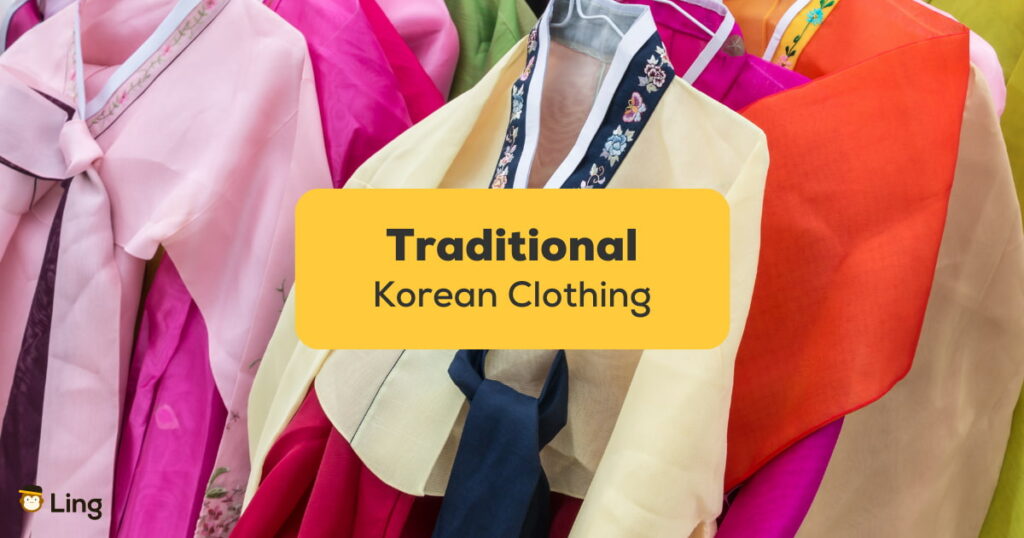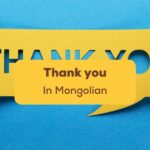Imagine the feeling of buttoning up a crisp uniform every morning. Whether it’s the neatly pressed shirts of school days, the distinctive garb of a specific job, or the elegant attire worn on special occasions, uniforms or 제복 (jebok) have a way of evoking a sense of identity, discipline, and belonging. These uniforms will then be known worldwide as traditional Korean clothing, hanbok (한복; 韓服), that many will enjoy, even in modern South Korea.
In this post, we’ll go over the common traditional Korean clothing lingo to help you connect with the locals a little bit easier. Shall we learn more Korean? Let’s go!
Evolution Of Traditional Korean Clothing
Long before contemporary Korean culture took the world by storm, ancient dynasties had intricate traditional Korean clothing representing status, profession, and societal roles. These garments, intricate in design and meaningful in representation, have played pivotal roles throughout Korean history.
Three Kingdoms Period (57 BC – 668 AD)
One important event in the history of Korea was its division into three main kingdoms: Goguryeo, Baekje, and Silla. The clothing of this period was influenced by Korean shamanistic rituals. Dancers and shamans donned garments with vibrant patterns, and the commoners wore simpler versions. Warriors in Goguryeo were also known for their distinctive armor, which provided both protection and agility in combat.
Unified Silla And Goryeo Dynasty (668 – 1392 AD)
Post the Three Kingdoms, the Unified Silla era saw innovations in clothing styles. This was further refined during the Goryeo Dynasty, which is particularly celebrated for its intricate craftsmanship. The royal court and aristocracy flaunted robes with delicate embroidery, reflecting their elevated status.
Joseon Dynasty (1392 – 1897 AD)
Perhaps the most iconic era for Korean fashion, the Joseon Dynasty, gave birth to the Hanbok that we recognize today. With its voluminous jeogori (jacket) and chima (skirt), this attire was distinctively structured and symbolic. The colors, patterns, and accessories worn with the Hanbok indicated one’s status, age, and marital status. The Confucian influence during this era also introduced a hierarchical clothing system, underscoring the importance of societal roles.
Modern Korean Traditional Korean Clothing And Uniforms
As Korea advanced and modernized, so did its traditional Korean clothing. From the hanboks worn during celebrations to the recognizable school uniforms, the clothing transitioned from purely functional to an amalgamation of function, fashion, and tradition.
Common Types Of Korean Traditional Clothing
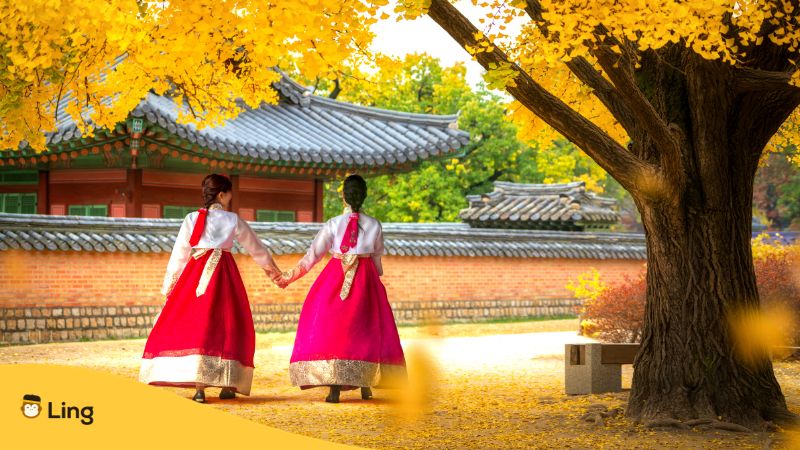
Traditional Hanbok (한복 | Hanbok)
The 한복 (Hanbok) is the quintessential representation of Korean culture. Comprising a jeogori (jacket) and chima (skirt) for women and a jeogori with baji (pants) for men, this attire is usually crafted from fine silk and vibrant colors. Worn during festivals like Chuseok (Korean Thanksgiving) and Seollal (Lunar New Year), the Hanbok embodies the nation’s artistic spirit and historical roots.
- Korean: 그녀는 한복을 입고 결혼식에 갔어요
Pronunciation: Geu-nyeo-neun han-bok-eul ip-go gyeol-hon-sik-e gaht-seo-yo.
Translation: She went to the wedding wearing a Hanbok.
Traditional Korean clothing, like uniforms, shares the nation’s rich history. It comes in diverse forms, each with its unique significance. The variety of these uniforms mirrors the multifaceted layers of Korean society, its traditions, and its modern evolution. Let’s explore the most distinctive ones.
School Uniforms (학교 교복 | Haggyo Gyobok)
Uniforms are an unmistakable symbol of youth and one of the significant Korean clothes. Evolving over the decades, the modern 학교 교복 (Haggyo Gyobok) consists of blazers, vests, white shirts, ties or bows, and skirts for girls or trousers for boys. They showcase discipline, community, and equality among students. Many schools have a winter version with longer sleeves and thicker materials and a summer version that is lighter and often short-sleeved.
- Korean: 나는 오늘 학교 교복을 입었어요.
Pronunciation: Na-neun o-neul hak-gyo gyo-bok-eul ip-eoss-eo-yo.
Translation: I wore my school uniform today.
Military Uniforms (군복 | Gunbok)
Another Korean traditional clothing is their military uniforms. With the nation’s mandatory military service for men, the 군복 (Gunbok) stands as a symbol of national pride, duty, and sacrifice. These uniforms vary by branch – army, navy, air force – each with distinct designs and badges that indicate rank and unit.
- Korean: 그는 군복을 자랑스럽게 입고 있어요.
Pronunciation: Geu-neun gun-bok-eul ja-rang-seu-rob-ge ip-go it-seo-yo.
Translation: He is proudly wearing his military uniform.
Work Uniform (작업복 | Jag-eopbok)
Depending on the industry and profession, 작업복 (Jag-eopbok) in Korea ranges from the chic attire of airline personnel to the aprons of market vendors. They signify professionalism, expertise, and identity, emphasizing the importance of one’s role in the societal fabric. Whether it’s the tailored suits of corporate offices or the protective gear of construction workers, each of these important Korean work clothes narrates a story of dedication and pride.
- Korean: 작업복은 항상 깨끗해야 해요.
Pronunciation: Jak-eop-bok-eun hang-sang kkae-kkeut-hae-ya hae-yo.
Translation: The work uniform should always be clean.
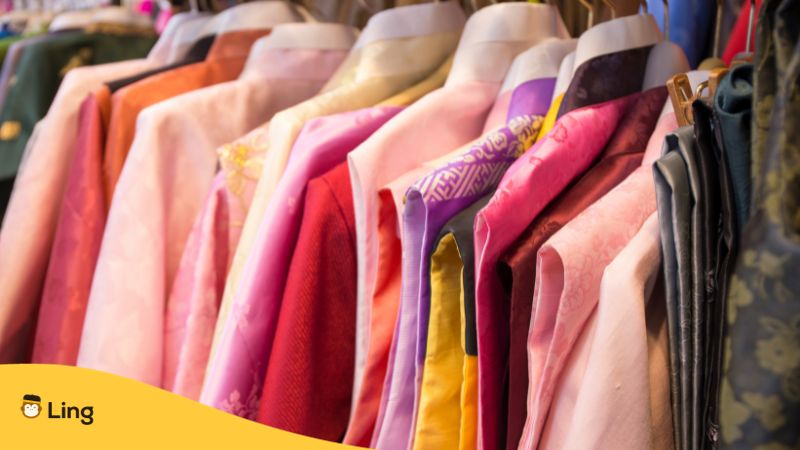
Ceremonial Attires (의식 복장 | Uisik Bokjang)
During life’s significant milestones – birth, first birthdays, weddings, and funerals – Koreans wear specific outfits. These attires, meticulously chosen based on the occasion, underscore Korea’s reverence for traditions and life transitions.
- Korean: 이 의식 복장은 어떤 행사에 적합한가요?
Pronunciation: I uisik bok-jang-eun eo-tteon haeng-sa-e jeok-hap-han-ga-yo?
Translation: For which event is this ceremonial attire suitable?
Performance Uniforms (공연복 | Gongyeonbok)
Korean arts, from traditional dances to K-pop performances, have unique costumes. 공연복 (Gongyeonbok) for traditional dances often resemble the Hanbok but with more flamboyant designs, while modern performers have globally inspired yet uniquely Korean outfits.
- Korean: K-pop 그룹은 공연복을 입고 무대에 섰어요.
Pronunciation: K-pop geu-roup-eun gong-yeon-bok-eul ip-go mu-dae-e seot-seo-yo.
Translation: The K-pop group stood on stage in their performance uniforms.
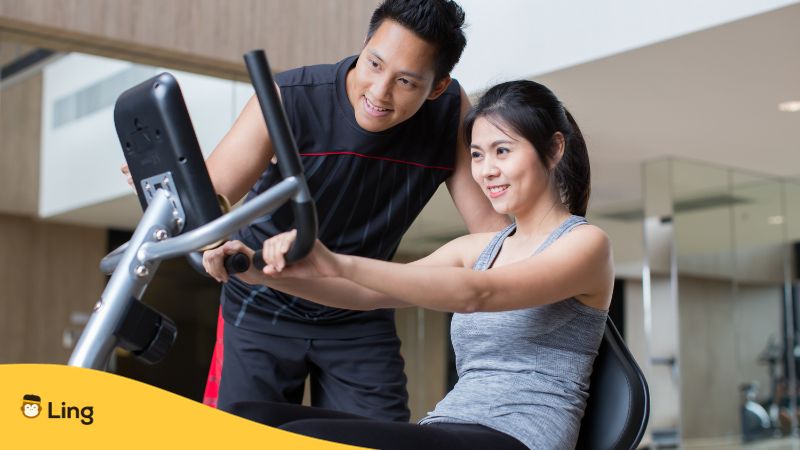
Sportswear (스포츠복 | Seupocheubok)
From the Taekwondo dobok to the tracksuits of athletes, Korean sportswear marries functionality with national pride, especially during international events like the Olympics.
- Korean: 이 스포츠복은 편안해 보여요.
Pronunciation: I seu-po-cheu-bok-eun pyeon-an-hae bo-yeo-yo.
Translation: This sportswear looks comfortable.
Nurse Uniform (간호사 교복 | Ganhosa Gyobok)
Korean nurses don a 간호사 교복 (Ganhosa Gyobok), often a pristine white dress with a cap, reflecting care, hygiene, and the noble spirit of the nursing profession.
- Korean: 간호사 교복을 찾고 있어요. 어디에서 살 수 있나요?
Pronunciation: Gan-ho-sa gyo-bok-eul chaj-go isseo-yo. Eo-di-e-seo sal su it-na-yo?
Translation: I’m looking for a nurse uniform. Where can I buy one?
Learn Korean With Ling
For those enthusiastic souls aiming to dive deeper into the Korean language and culture, a treasure trove of resources awaits you. One such recommended tool is the Ling app, tailor-made to cater to your Korean learning journey. Whether you’re an Android enthusiast or an Apple aficionado, it’s readily available. Head to the App Store or Play Store now and download the Ling app.
Your gateway to mastering Korean is just a tap away!
